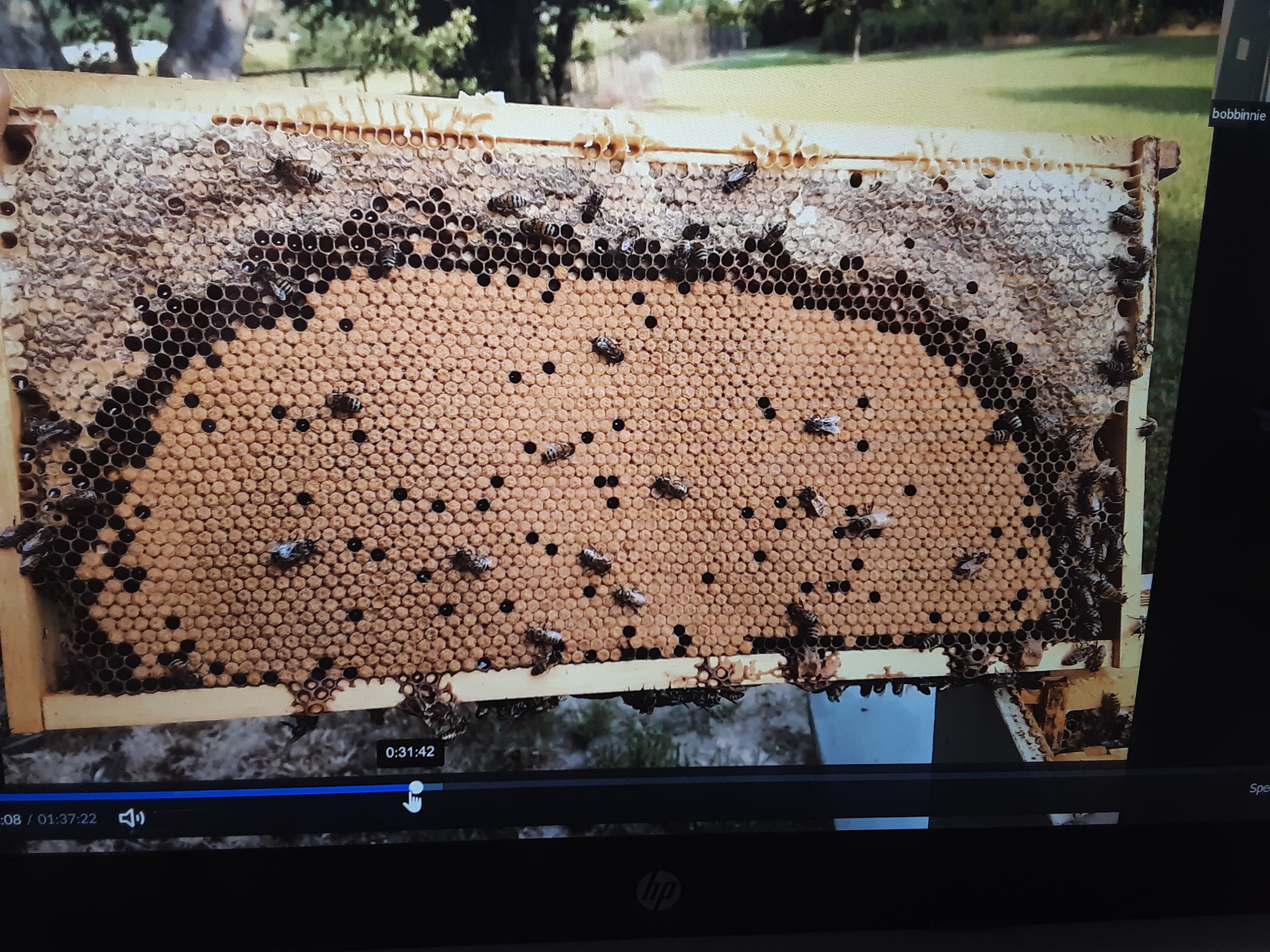Worker honey bees enclose last instar worker larvae in their cells with a brood cell cappingcapping:
the covering that bees add over comb cells containing fully ripened honey or to cap brood that has reached the pupal stage; bee bread cells are not capped that includes recycled (darker) wax from the rims of the brood cells. Such cells are brown in color, slightly convex and distinctly six-sided. Some cells, in the process of being cappedcapping:
that includes recycled (darker) wax from the rims of the brood cells. Such cells are brown in color, slightly convex and distinctly six-sided. Some cells, in the process of being cappedcapping:
the covering that bees add over comb cells containing fully ripened honey or to cap brood that has reached the pupal stage; bee bread cells are not capped , will have a circular hole in the center. CappedCapping:
, will have a circular hole in the center. CappedCapping:
the covering that bees add over comb cells containing fully ripened honey or to cap brood that has reached the pupal stage; bee bread cells are not capped drone cells will be distinctly domed, standing above the flatter worker cell cappings.
drone cells will be distinctly domed, standing above the flatter worker cell cappings.
Once nectar is fully ripened, workers enclose filled honey cells with new wax. Honey wax cappings, in contrast to brood cell cappings, are seldom distinctly six-sided. Honey cappings may be very white initially but will darken with repeated bee travel over their surface. Honey-filled cells where the honey contacts the cappingcapping:
the covering that bees add over comb cells containing fully ripened honey or to cap brood that has reached the pupal stage; bee bread cells are not capped may appear watery and somewhat darker.
may appear watery and somewhat darker.
Burlew R. 2011. Why people prefer dry cappings and how to get them. Honey Bee Suite. Accessed 2023. https://www.honeybeesuite.com/wet-cappings-vs-dry-cappings/
Eyer M, Neumann P, Dietemann V. 2016. A Look into the Cell: Honey Storage in Honey Bees, Apis mellifera. PLoS ONE 11(8): e0161059. https://journals.plos.org/plosone/article?id=10.1371/journal.pone.0161059